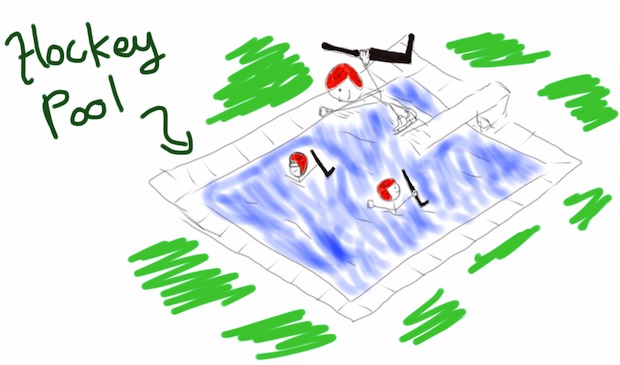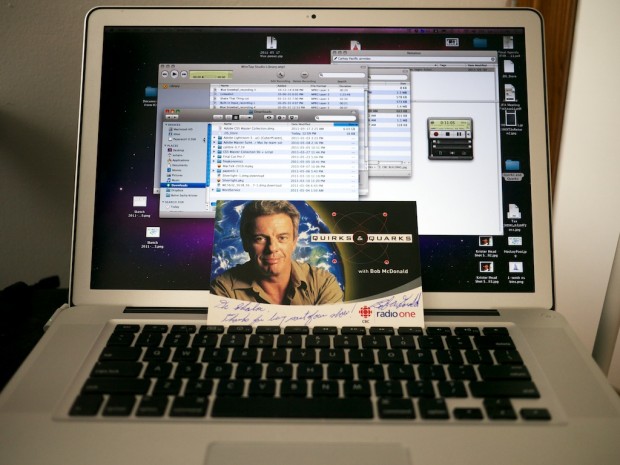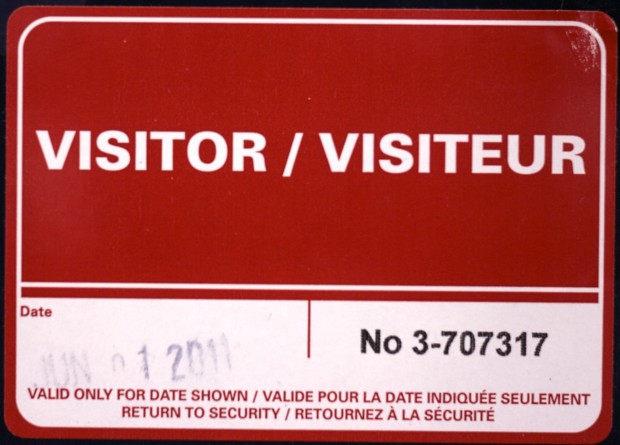April in Canada is the start of a national tradition–the NHL hockey playoff pool. In most pools each participant forms a fantasy hockey team by picking ("drafting") players at each position from NHL teams who have made the playoffs. Each time a player on your fantasy team scores, blocks a shot, gets an assist, or gets a hit your fantasy team gains points. At the end of the playoffs the fantasy team with the most points wins. At the institute I work at there is a playoff hockey pool for grad students and post-docs; for the first time in my life I have a vested stake in the playoffs! Some people agonize over their decisions making complex spreadsheets tracking the performance and statistics of various players. Others rely on hunches and gut feelings. My decisions this year were made recklessly. I put off entering until the last minute and only had twenty minutes to make my selections. Not having followed the regular season that closely I mostly went for names I recognized. After the first few days I am proud to say that my team, "BuffaloSucks", is sitting in fifth place out of twenty-three teams. Not bad. The problem is that the first place is occupied by a team called "TruQuantum" (pronounced "True Quantum"—us physicists are hip like that).
Some people agonize over their decisions making complex spreadsheets tracking the performance and statistics of various players. Others rely on hunches and gut feelings. My decisions this year were made recklessly. I put off entering until the last minute and only had twenty minutes to make my selections. Not having followed the regular season that closely I mostly went for names I recognized. After the first few days I am proud to say that my team, "BuffaloSucks", is sitting in fifth place out of twenty-three teams. Not bad. The problem is that the first place is occupied by a team called "TruQuantum" (pronounced "True Quantum"—us physicists are hip like that).
TruQuantum is a team that was entered by a couple of grad students who chose their players randomly based on the outcomes of quantum events. But why use quantum events to randomly pick a team instead of just flipping a coin? Strictly speaking flipping a coin does not lead to random results. We usually think that when we flip a coin there is a 50% chance it will either come up heads or tails. But what if on the next coin toss we were able to flip the coin in exactly the same way? If we held the coin in the same way, applied the same force too the coin, released it from the same height, had the exact same air currents influencing it, then the coin should land exactly the same way. We could make the coin land heads (or tails) whenever we wanted–the coin toss would no longer be random or fair.
Making random numbers is hard
It turns out that creating truly random numbers is a hard task. Most computers have something called a random number generator built in that can spit out random numbers on demand. The problem is that these random number generators start with an initial set of numbers known as the "seed". As long as the seed is hidden, the sequence of numbers the computer spits out appears to be random. If the seed is discovered, then it is possible to predict every "random" number the computer will suggest.
Random number generators play an important role in many different areas, most notably in security and methods to share secrets (sometimes called cryptography). Games and other computer software also use random number generators extensively. For example, many online poker games use random number generators to "shuffle" a deck of cards and determine who gets dealt what hand. If you were to know what the seed used in the random number generator was, you could predict every card that every player receives. In reality there are a number of other things you have to know besides just the seed to break such a system, but the point is that these random numbers only appear to be random.
Quantum random number generator
Quantum mechanics offers a solution to the problem of generating random numbers as randomness is an essential part of quantum mechanics. Imagine the situation I described earlier where a coin is tossed. If we were able to exactly duplicate every aspect of the coin toss we could always make the coin lands heads up. With a quantum coin the situation is different. Even if a quantum coin is flipped in exactly the same way every time the results will be random; there is no way to know what the outcome will be.
 One way to perform a quantum coin toss is to use light. Here the coin is really a photon–a single particle of light–that is sent to a special piece of glass that acts like a mirror and reflects the photon 50% of the time or acts like a window and lets the photon pass straight through 50% of the time. If the photon is reflected, this corresponds to getting "heads". If the photon passes straight through this corresponds to getting "tails". There is no way to predict what the photon will do; the results are completely random. This is the setup used by the members of team TruQuantum to pick their players randomly.
One way to perform a quantum coin toss is to use light. Here the coin is really a photon–a single particle of light–that is sent to a special piece of glass that acts like a mirror and reflects the photon 50% of the time or acts like a window and lets the photon pass straight through 50% of the time. If the photon is reflected, this corresponds to getting "heads". If the photon passes straight through this corresponds to getting "tails". There is no way to predict what the photon will do; the results are completely random. This is the setup used by the members of team TruQuantum to pick their players randomly.
As the hockey playoffs continue I will be eagerly following how well team TruQuantum performs. It is both the most interesting and nerdy team in the entire field, and that is saying something considering all of the participants in the pool are quantum physicists.

















